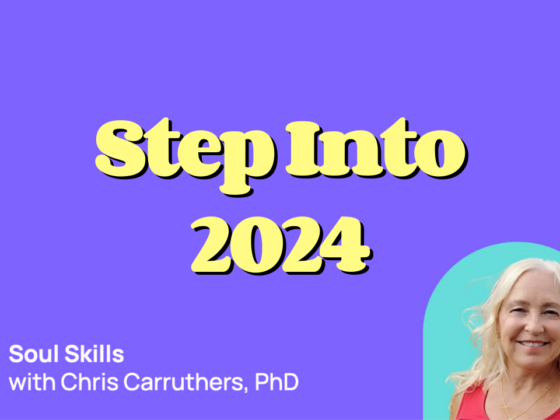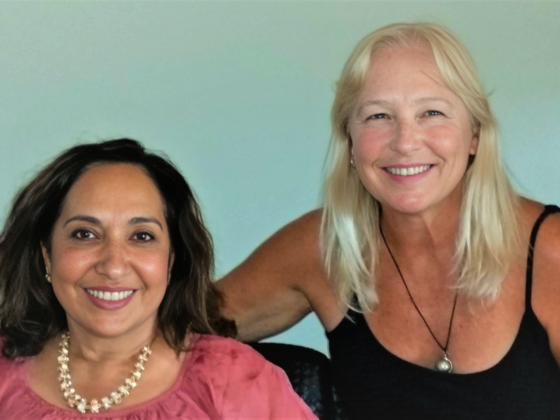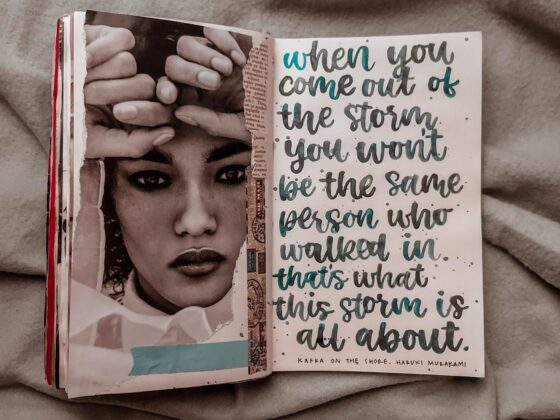Living life to the fullest is absolutely possible for you even while coping with persistent pain. Even more hopeful is that improvements in how you feel may be noticeable faster than you think.
Imagine that––as early as tomorrow––a simple daily practice of 15-20 minutes can get you there. Slowly but surely, you can find yourself in a place where you miraculously become aware that you are NOT aware of pain.
Stop and consider:
- What is your pain like right now?
- And what would your days be like if pain wasn’t keeping you from who you want to be, what you want to do, and what you want to have?
Pain does NOT have to interfere
with you having a fulfilling day.
Stephen Hawking didn’t let painful thoughts about limitations stop him from inspiring the world.
With skating injuries that left me unable to put weight on either leg or use my left arm without pain for over 6 months, I found that recommitting to these tools healed my pain exponentially faster. What a relief!
Constant pain is a debilitating and exhausting condition, and no one can understand what it is like for you unless they have experienced it themselves. Pain, whether acute or chronic, is triggered by the body or even the emotions.
The key to managing pain is being aware how connected it is on both the physical and emotional levels of your experience.
My “two steps to success” strategy is compassionate and practical, combining two of my best practices, grounded in the approach that our physical state is only a small part of who we really are at the soul level. Say to your pain right now, “I’ve had enough!” and get started today.
The medically proven tools we’ll discuss today are: expressive writing (journaling) and meditation.
These two practices lifted me gently out of Fibromyalgia and Chronic Fatigue Syndrome over seven long years of unbearable and crippling chronic pain. (For more information about the depth of suffering caused by Chronic Fatigue Syndrome, see Lighting Up a Hidden World by Valerie Free.)
Expressive journaling helped me sleep better, clear the “fibro fog,” and move through relentless pain. And meditation was a calming practice that took my healing to another level.
It’s hard to imagine that these two complementary practices could heal me of a condition where I was in bed 18 hours a day, sleeping on an ice pack both winter and summer, never feeling fully asleep or fully awake, and could barely do simple activities like climbing stairs.
When I complained to my spiritual mentor about wanting to write, but having too painful a wrist to use a computer, she said, “Get started anyway, and you will notice your pain diminish.”
I didn’t understand this paradox at the time, but I understand now, and want to share with you how it works.

Why You Must Manage Your Chronic Pain Now
Chronic pain affects your ability to think clearly, prioritize, and be kind to yourself. Many of you might even find yourself negating the pain and realize you’ve stopped seeing the true impact it has on your life. It’s one way to cope, for a short while, but it’s not effective in the long term.
If you are ignoring or blinded by how much depth pain steals from your quality of life, or how much it might be costing you in your relationships, finances, fitness, and vitality, keep reading on.
This recent review published in The Lancet in May 2021 explains how the consequences of chronic pain affect the world, and how widespread the prevalence of pain has become. Please don’t feel alone and isolated in pain anymore and remember that while you may share a challenge of persistent pain with 30% of others, your experience is unique.
The Canadian Pain Task Force found that pain had an economic impact of $40.3 billion in 2019, including costs of medication and doctor’s visits. You may have contributed to this statistic.
Chronic pain is a societal burden that negatively impacts families financially, emotionally, and professionally. You’re losing productivity, joy, and quality of life when you suffer from chronic or acute pain.
Pain can be described in various complicated categories in our medical journals, but healing pain well starts with your focus, your power, and your consciousness. And each of these are embedded in every cell and connected to every part of your body, mind, soul, and spirit.
So be honest with yourself now.
Is pain limiting your life and potential? Are you enjoying life much less due to pain? Can you admit that the consequences of pain affect your family, your work, your finances, and your social connections? And how much sleep have you lost because of it?
Most importantly, have you lost the freedom to express yourself fully and show up in the world sharing your vitality and uniqueness?
And finally, are you ready to embrace a new solution, some new options?
If yes, you’ve come to the right place!
How to Live With Chronic Pain: Two Steps to Decrease Pain More and More Each Day
My two-step process is a daily task that takes about 20 minutes. Pain management will become simpler and easier as you commit to everyday practice, and you will gradually begin to have a healthier relationship with your pain. Once you do that, you can do anything imaginable.

Step 1: Build Awareness Through Journaling
The first step is to clearly acknowledge your truth to yourself and others––to admit how you really feel, how hard it is, the costs you pay, and how much you are suffering.
One way to do this is through journaling. It’s safe and you can be completely honest because you don’t have to worry about how people may misunderstand or react to your suffering.
The challenge is that when you become so accustomed to living with and accepting the pain, you sometimes fall into a state of unintentional denial. This denial can cloud your awareness of what is making your pain worse. Of course, some pain is impossible to ignore. But when you do so, the signs and triggers become less and less apparent.
Through your writing, you can easily and quickly learn what triggers your pain.
You will find that your pain is exacerbated by many layers of your experience. As you reflect on it, you might find that your pain is related to deep parts of yourself that you may have inadvertently neglected.
When I was ill, a happy situation with some laughter always lightened my sense of my physical pain. And situations of stress or rushing or overwhelm moved my pain to the forefront of my awareness. The physiological pain in the body was the same but my experience of it was different.
Maybe you can’t heal your pain today, but you can change your experience of it right now.
Pain has layers of complexity, causes, and triggers. This means that addressing it from your heart and soul––from outside looking into the physical body––can give you a clearer perspective of what makes your pain worse and what makes it better.
How to Journal to Decrease Pain
To build your awareness and resilience, take the time to write about your pain and understand it’s root.
Does pain trigger these emotions?…
… Or wait, is it the emotions that are triggering more pain?
When you’re journaling, notice if you:
- Are feeling the need to withdraw
- Have unexplained anger or frustration
- Are suddenly impatient or intolerant
- Are feeling generally anxious
- Are feeling apathetic or want to give up
- Are losing interest in things you usually enjoy
- Have an overwhelmed sensation of being unable to cope
Why Journaling Works to Alleviate Pain
The field of psychoneuroimmunology is fascinating. It teaches us that your emotional state tells the state of your physical body.
Your brain, body, and consciousness are so intricately connected, and many people miss the options for healing at different levels that lie outside of the physical realm.
Physical solutions like medications and treatments can be wonderful, but healing pain from a higher energy level works much faster.
Being aware of how acute and chronic pain is interconnected with your emotions is an essential step to help you clarify and avoid the emotional challenges caused by pain.
Think of relationship communications, work productivity, and all life situations from a perspective of interconnectedness. Solving a problem at any level will influence good results in others.
These cycles of influence are hard to untangle and interrupt, so you don’t need to necessarily solve them at the same level in which they show up.
In the example of my wrist pain after surgery where I was frustrated because it was painful to write, I took a different approach. When I allowed myself to really feel the personal pain of not progressing my career as a health consultant at that time, I focused instead on the heart-driven writing that I could slowly build up over time. With this shift in perspective, I noticed my pain diminish much more quickly than my surgeon had predicted.
Spiritual Connection
Your soul wants only to express itself, and the role of your body is to support your soul’s expression, which is your unique contribution to the world that only you can accomplish. When you courageously choose to follow your soul’s path, support will come to you in surprising forms, including healing, resilience, and strength on all levels of your being.
This doesn’t mean there won’t be illness in your body, but the illness symptoms themselves exist as triggers to move you toward awareness of how to express your soul’s purpose.
If you focus on pain, you will notice more pain. If you focus on moving through pain, you will notice yourself moving through pain!
Remember, when you hold yourself so tightly against pain, both physical and emotional, you will become even more heavy and exhausted. This cycle drains your energy and creates more pain, and you have very little energy left for your healing. When your painful emotions are expressed and released onto paper or computer, you can often feel immediate relief both physically and emotionally. You’ll also feel more courage and confidence to step out and be more of yourself.
And please don’t be offended by medical or health professionals who dismissively say that pain is a psychosomatic condition. Life itself is a psychosomatic condition!

Step 2: Calm Pain through Meditation
Meditation, together with journaling before bed, can improve your sleep as demonstrated in my own PhD research. And see this meta-analysis in the Annals of Behavioral Medicine in 2017, for more evidence that meditation helps with pain tolerance and reduction.
Meditation requires consistent practice, awareness, and mindfulness. It teaches you to be the observer of your pain, and helps you realize that the pain is in your physical body only, not your spirit. Meditation helps you understand it and minimize its influence over your daily life. You become more resilient and resistant to pain, knowing that you control your experience of it. You are aware of it, but it can’t take you down. You just consciously remind yourself and feel stronger knowing that pain is just a small part of your experience of the physical body. Your spirit and soul are powerful resources that are always available to you, no matter what your physical state is.
Get Started!
Here’s some ideas of how to adopt this two-task practice. There are also many meditation and journaling resources on line and at www.spiritedhealth.org and www.chriscaruthers.com where you can find something that resonates with what you need.
Block 20 minutes to make these two steps part of your bedtime ritual each night.
Task 1: Meditate (5-15 minutes)
Use these steps to calm your mind, deepen your awareness of your true experience, and observe your pain compassionately. Take back control of your experience of it. Use a timer if you’re not used to meditating because it’s easy to lose track of time.
- Open your favorite journal and write down something that happened today that triggered a bigger awareness of your pain. It could be a simple trigger word like colleague, kids, driving, clutter, rushing, etc.
- Get as comfortable as you can, and draw an even breath deep into your diaphragm, as slowly as possible, and hold it for a moment.
- As you exhale, imagine tension leaving your body as the air flows out.
- Repeat this relaxed breathing until you notice a gentle awareness of your cells and tissue. Don’t rush. Meditation is about taking it slow and allowing things to flow as they should.
- Focus your awareness on the pain in your body. Use the Body Scan if you like.
- Linger your awareness where your pain is located, if possible. Be kind to it, observe it. Spend some slow moments there. Rate its intensity from 0-low to 10-extremely painful.
- Now remember the trigger word or words you wrote down.
- Continue to notice the pain. Focus on how it feels, what shape it takes, and its intensity.
- You will notice some subtle changes as you focus your awareness on it. Let it change naturally. Continue breathing gently and evenly while the pain keeps changing.
- Notice how your awareness changes it. The shape, size, and intensity transform slowly but surely. Don’t force it. Allow it to happen naturally. Your pain will likely release and soften.
- The pain may not completely dissipate, and that’s okay. It’s part of you, for the moment.
- Clearly notice that your awareness changes your experience of the pain. Your conscious mind, the gentle observer, may be able to accept it, stop resisting it, and then change it slowly, compassionately, and confidently.
- When you are ready, take another mindful breath, and open your eyes.
- Move slowly to the second task.
Task 2: Express (5-15 minutes)
- Turn to your journal and write about your thoughts, feelings and experiences as you did the exercise. Write about how you feel now, what you noticed, how the pain appeared to you, and what the intensity of the pain is now.
- Write about turning the intensity level down. (Sometimes of course this awareness will bring a temporary but stronger sense of your discomfort, but stick with it if you can, and breathe through it if this happens).
- If it was your experience, write about how powerful you were in managing your pain.
- Explore the meaning and source of the pain.
- Go deeper into more layers of meaning and sources.
- Write to understand yourself better, and uncover why this pain exists for you at this moment in your life.
- Write about anything else this exercise triggered you to process. You might be very surprised at your insights.
- Close with your anticipation to continue again tomorrow. Positively predict more relief in your next session.
As you write, sense that you are releasing the problem and it no longer belongs to you, and it is no longer embedded in your physical tissue. Your pages consume the words and the problem. Your journal is your best friend, and it is your release of heaviness.
Here are a few questions to ask yourself when you are ready.
- What emotions need your attention – anger, overwhelm, vulnerability, envy, disappointment, regret, frustration, despair, sadness, self-love, belonging, loneliness, hurt? Or….? You might feel your heart rate rise momentarily with painful thoughts, but allow it to drop again. Just close your eyes for a second and breathe evenly again if you need to calm down while writing.
- What is your body asking for? More sleep, more activity, more healthy food? More love? More connection? More rest? More…..?
- Is there something you need to remove from your life? What do you want less of?
- Can you avoid the person or situation that triggered your pain, or take care of yourself with less frequent exposure?
- How else could you manage it or prevent it?
- What is the core message of your pain tonight?
- What else do you want me to know, wise body?
Remember, Relaxed breathing is the fastest natural method of calming yourself and your emotions.
Now, your next task is to sleep deeply. Your mind is peaceful and calm and clear of unwanted thoughts, and what we call intrusive thinking, which contributes greatly to insomnia. Develop these two practices into your daily bedtime routine, and you’ll be sleeping better, pain or no pain. You’ll be amazed at the results.
Final Thoughts on Pain and Your Spirit
I’ve used my two-step strategy successfully and now lead a richer and much more resilient life. Can it really be that simple? Well, most people with CFS do not recover fully, so I am an exception and I am very privileged and grateful to help others with similar complex illnesses and pain syndromes.

I am thrilled to support you to return to your full vitality, even if at moments it seems impossible. You know how much chronic pain affects the world, and you know that you have so much more to share with your loved ones and society.
Don’t suffer in silence. Share your experiences, good and bad, with others. And you likely know someone else in pain who can benefit from your thoughts and stories of coping. Reach out and help, because you know the struggle, and you can help them watch for improvements.
Please share this helpful strategy on social media or with a friend.
For more valuable tips, subscribe to our newsletter at the bottom-right of our home page.









